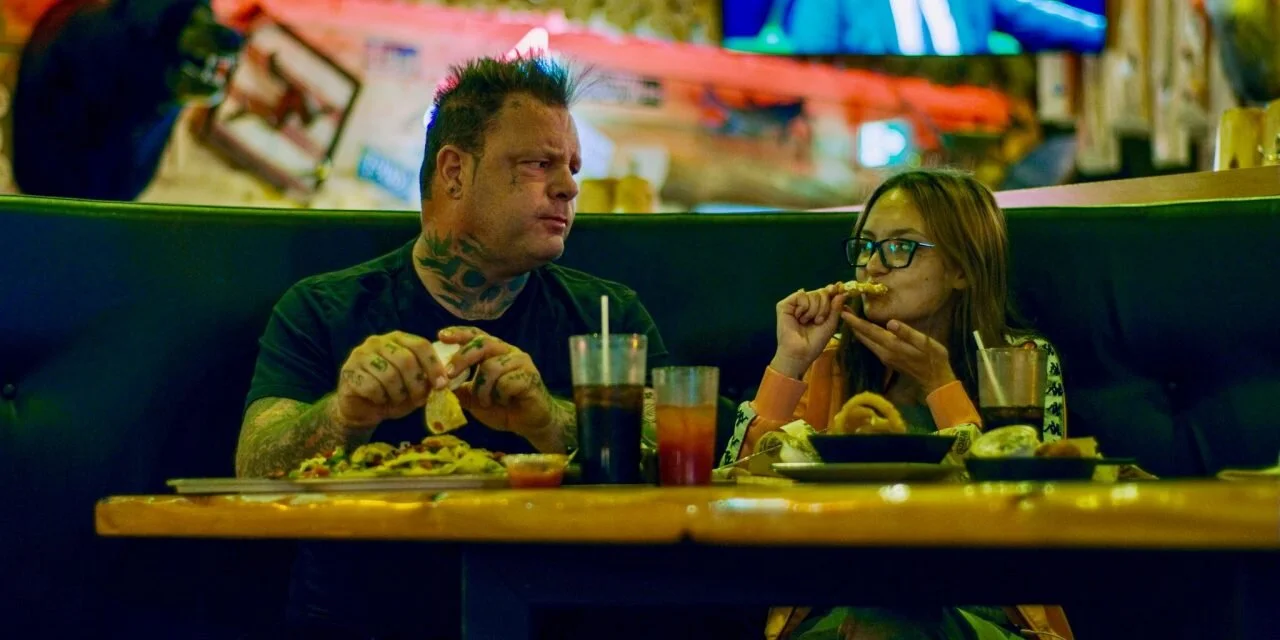Nail in the Coffin
Written and directed by Michael Paszt
Featuring Ian Hodgkinson, Kevin Arturo Geist, Chavo Guerrero Jr. and Matthew Kaye
Running time: 1 hour and 28 minutes
by Nikk Nelson
I don’t know, growing up, if I knew another kid my age that wasn’t a fan of professional wrestling. My formative years ran alongside the WWE Hulk Hogan ‘say your prayers and take your vitamins’ Hulkamania era and my adolescence was spent as a rabid fan of the WWE Stone Cold Steve Austin, Degeneration-X, and The Rock Attitude era. Yes, I spent a brief period as a teenager with solid aspirations of becoming a professional wrestler. Yes, I told family members who, justifiably, rolled their eyes. I eventually settled on outlining (and hopefully one day writing) a novel where one of the main characters is a professional wrestler. Even though my fandom faded into adulthood, I’ve always respected and admired the sport. And, yes, I said it. Sport.
Anyone with any doubts about it being a sport, I encourage to watch any number of documentaries produced in the last fifteen to twenty years, starting with Beyond the Mat (1999)—which I ditched school to go and see—it played in only one movie theater in Wichita for one week. Rumor had it, Vince McMahon was so upset with its content, he essentially killed its theatrical run. It may have been for good reason. The film depicts the very real and very dark side of professional wrestling. Today, there are all sorts of exposé documentaries available including one of my favorites, The Resurrection of Jake the Snake (2015). Jake the Snake (and his segment in Beyond the Mat) apparently, in part, inspired Darren Aronofsky to make The Wrestler (2008). Both documentaries paint a portrait of a man who is not at all singular in the business. Very common threads run through these stories—the enduring of physical and sexual abuse as a child, poverty, alcoholism, drug abuse, divorce, gruesome injuries, abbreviated life expectancy.
So, when the opportunity arose to review Nail in the Coffin: The Fall and Rise of Vampiro (2019), I was excited to hear the story of a wrestler I’d never even heard of. I have almost unshakeable brand loyalty. Vampiro’s only stint in the United States in the 90’s and 00’s was with WCW. At that time, I watched WWE exclusively. The Monday Night Wars (competing shows from these two brands during this time) is well documented in The Monday Night War: WWE Raw vs. WCW Nitro (2004) and The Monday Night War: WWE vs. WCW (2014). WCW used to do things like, because they filmed live, begin every show announcing the match results and storyline developments on WWE Raw, which at the time was filmed a week or more ahead of time. I found those kinds of tactics to be cheap, I found their programming to be trashy, their matches sloppy, and toward the end of their existence, when they weren’t blatantly ripping off the WWE, they were doing things like dropping the championship belt to actor, David Arquette—quick plug for fellow ‘jawner Ian Hrabe’s piece on You Cannot Kill David Arquette (2020) that chronicles his quest for redemption of this roundly despised event in the industry.
Vampiro, née Ian Hodgkinson of Ontario, goes into some detail about his very sour experience with WCW in this documentary which led him to return to wrestling in the country where he first found fame and success—Mexico. Any wrestling fan knows there’s basically three countries in the world that love professional wrestling: The United States, Japan, and Mexico. The Mexican style of professional wrestling is known as Lucha Libre, characterized by colorful masks and more rapid and complex sequences of holds and maneuvers versus the US and Japanese styles. What sets this documentary apart from others is that it opens on Vampiro currently enjoying success. Older now, his in-ring days are mostly behind him, and he currently holds a firm position as the showrunner of AAA programming— Mexico’s equivalent of WWE. His story follows the same notes they all seem to. He discusses his struggles with drug addiction, injuries and divorce. But the one thing Ian managed to do, that you don’t hear as often in these stories, was maintain a positive relationship with his daughter, despite the distance between their home in Canada and his job in Mexico. The focus of the documentary is Ian’s tireless dedication to both his daughter and the business but highlighting his absolute priority as a father. He struggles to juggle all of the day to day responsibilities, including contending with the larger than life talent and their just as sizable egos. Ian comes across as a very sweet and humble person, having arrived at that humility through very harsh life lessons that he actively chose to learn from—something that ego, especially with wrestlers who experience fame, usually struggle with to the backdrop of far more severe and grim downfalls. We find Ian in a much more hopeful place and can root for him in a different, more refreshing way.
Available to watch on demand today.


